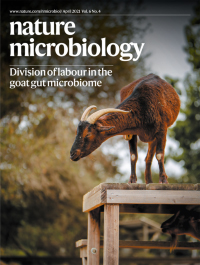Advanced Search
High-throughput Method for Detecting Siderophore Production by Rhizosphere Bacteria
Published: Vol 11, Iss 9, May 5, 2021 DOI: 10.21769/BioProtoc.4001 Views: 4988
Reviewed by: Yufang Lu
Abstract
Siderophores, a key substance that microorganisms produce to obtain iron under iron-limited conditions, play an important role in regulating interactions between beneficial bacteria and pathogenic bacteria. A large number of bacteria were isolated from the rhizosphere, and we used the method presented here to assay the siderophore production by these rhizosphere bacteria. This method is a modified version of the universal chrome azurol S (CAS) assay that uses a 96-channel manual pipetting workstation. By combining the liquid CAS assay with the multi-channel pipette workstation, high-throughput and rapid detection of siderophore production can be achieved. In summary, this method can be used to gain a general understanding of siderophore production by rhizosphere bacteria.
Keywords: Rhizosphere bacteriaBackground
Siderophores have an extremely strong affinity for ferric iron and are extremely important to bacterial survival. Almost all known bacterial species can produce siderophores (Miethke and Marahiel, 2007), which affect their interaction with microorganisms in close proximity. Siderophores produced by neighboring organisms can act as growth factors that promote the growth of unculturable microorganisms (Kaeberlein et al., 2002), and they also play a significant role in the biological control mechanism against certain phyto-pathogens. Over forty years ago, Kloepper et al. (1980) were the first to illustrate the importance of siderophore production as a mechanism of biological control of Erwinia carotovora by several plant growth-promoting Pseudomonas fluorescens strains such as A1, BK1, TL3B1, and B10. Siderophores play an important role in the composition and function of the rhizosphere microbiome and plant health.
The chrome azurol S (CAS) assay, the most common method for detecting siderophore production (Schwyn and Neilands, 1987), is based on a competition for Fe3+ between the ferric complex of the dye CAS and the siderophore. Increasing the knowledge of siderophore production by rhizosphere bacteria will contribute to a better understanding of the interactions among rhizosphere bacteria. High-throughput detection of siderophore production can be achieved by combining the CAS assay with a 96-channel manual pipetting workstation. In this method, siderophore production was assayed by a modified version of the universal chemical assay developed by Schwyn and Neilands (1987) in 2,150 representative bacterial members, which will help to better understand the abilities of rhizobacteria to produce siderophores.
Materials and Reagents
96-well plate (96-well clear; Costar, catalog number: 3599)
Disposable Petri dish (90 mm; Jiangsu Kangjian Medical Products, catalog number: 161-0901)
96-well plate with 0.22-μm filter membranes (MultiScreenHTS GV Filter Plate, 0.22 µm, clear, sterile; Millipore®, catalog number: MSGVS2210)
Pseudomonas aeruginosa PAO1 (Ghysels et al., 2005)
Burkholderia cepacia H111 (Sathe et al., 2019)
Pseudomonas aeruginosa PAO1ΔpvdDΔpchEF (Ghysels et al., 2005)
Pseudomonas aeruginosa H111ΔorbJΔpchAB (Sathe et al., 2019)
Tryptone (OXOID, catalog number: LP0042)
Soy peptone (Chemical Reagent Co., Ltd. of Sinopharm Group, Shanghai Test, catalog number: 69047737)
NaCl (Nanjing Chemical Reagent Co., Ltd. CAS: 7647-14-5)
Agar (Fujian Jinyan Marine Biotechnology Co., Ltd., Chengfeng. CAS: 9002-18-0)
K2PHO4 (Nanjing Chemical Reagent Co., Ltd. CAS: 7778-77-0)
MgSO4·7H2O (Nanjing Chemical Reagent Co., Ltd. CAS: 10034-99-8)
Glycerol (Chemical Reagent Co., Ltd. of Sinopharm Group, Shanghai Test, catalog number: 10010618)
Casamino acids (DSLAB, catalog number: 18A0050)
FeCl3 (Chemical Reagent Co., Ltd. of Sinopharm Group, Shanghai Test, catalog number: 10011918)
Tris-HCl (1 M Tris-HCl, pH = 6.8, BL514A, 100 ml)
Gelatin (Chemical Reagent Co., Ltd. of Sinopharm Group, Shanghai Test, catalog number: 10010328)
Chrome azurol S (Chromeazurol S; Fluka, catalog number: 72687-25G)
HTDMA (VETEC, catalog number: V900413-100G)
Anhydrous piperazine (Piperazine, Reagentplus 99%, Sigma-Aldrich, CAS: 110-85-0)
Glucose (Nanjing Chemical Reagent Co., Ltd. CAS: 50-99-7)
Yeast extract (YEAST EXTRACT; OXOID, catalog number: LP0021)
Beef extract (Chemical Reagent Co., Ltd. of Sinopharm Group, Wokai, catalog number: 69004461)
Glycerin (Nanjing Chemical Reagent Co., Ltd. CAS: 56-81-5)
1/10 tryptone soya agar (1/10 TSA) (see Recipes)
1/10 tryptone soya broth (1/10 TSB) (see Recipes)
MKB medium (see Recipes)
Iron-rich medium (see Recipes)
MS buffer solution (see Recipes)
CAS assay solution (see Recipes)
Equipment
96-channel manual pipetting workstation (Suzhou SinoAnalysis Instrument Co., Ltd., SinoAnalysis, SC9000)
Microplate centrifuge (Hunan Hirsch Instruments, Benchtop Low Speed Centrifuge, TD5A)
Constant-temperature shaker (MIN QUAN, MQD-BIR)
Microplate reader (SpectraMax M5, Sunnyvale, CA, USA)
-80°C freezer (Haier, vertical ultra-low temperature storage box, DW-86L62, 2013 model)
Centrifuge (Eppendorf AG, 22331 Hamburg, 5424EH062551)
Pipette gun (Eppendorf Research plus)
Autoclave (Tega SANYO Industry Co., Ltd, MLS-3780, Tottori, Japan)
Constant-temperature and -humidity incubator (new seedlings, waterproof electric heating constant-temperature incubator, GNP-9080BS-III)
Balance (Sartorius, model: BSA2202S)
Vortex (SCIENTIFIC INDUSTRIES, USA)
Software
R 3.1.2 program (https://github.com/shaohuagu/sidanalysis.git)
Excel 2016
SPSS 20.0
Adobe Illustrator CS5
Procedure
Category
Microbiology > Microbial physiology > Adaptation
Biological Sciences > Microbiology > Microbial communities
Do you have any questions about this protocol?
Post your question to gather feedback from the community. We will also invite the authors of this article to respond.
Tips for asking effective questions
+ Description
Write a detailed description. Include all information that will help others answer your question including experimental processes, conditions, and relevant images.
Share
Bluesky
X
Copy link

